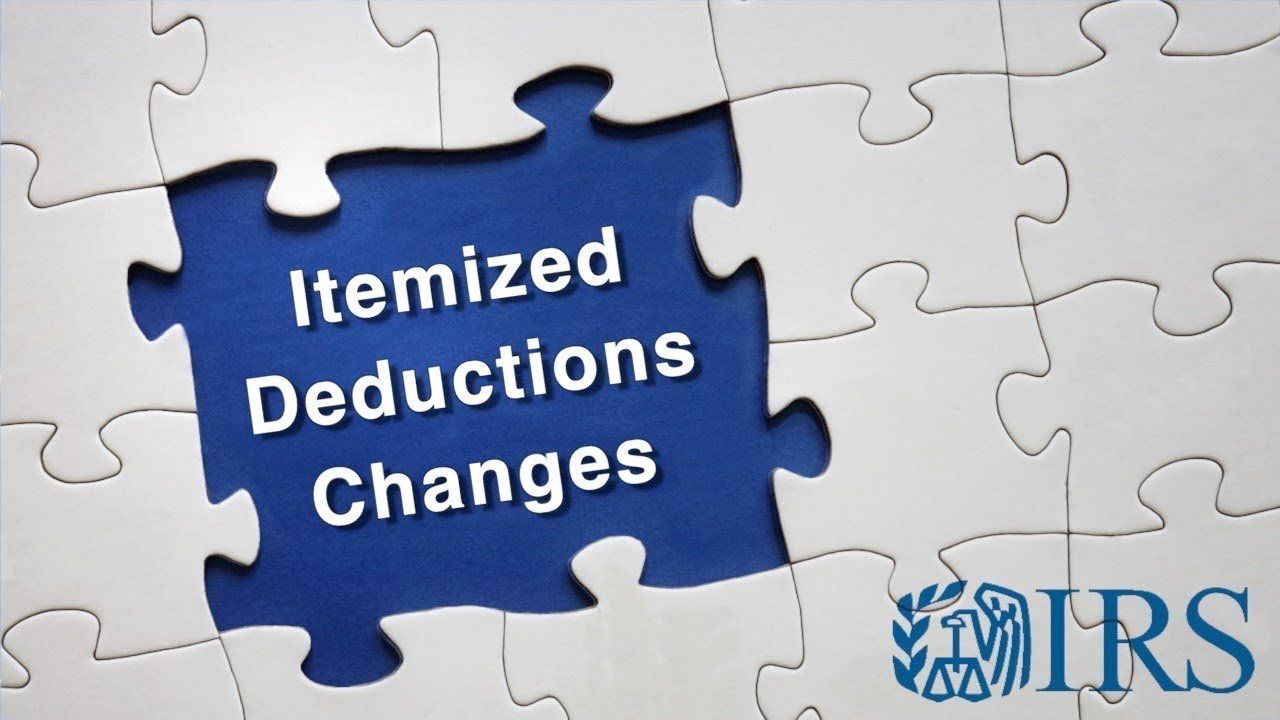
Crowdfunding is a national and international phenomenon. Over $17 billion is raised yearly in North America through world-famous websites such as GoFundMe and Kickstarter.
Donation-based crowdfunding is the best-known and largest type. Individuals use crowdfunding sites such as GoFundMe to solicit donations for themselves or others. Donations can be solicited for any purpose but typically involve raising money for medical expenses, youth sports, or education costs.
With this crowdfunding model, donors do not receive any goods or services in return for their money. As a result, the donations ordinarily qualify as tax-free gifts.
Donors get no charitable deduction for money they give to individuals through crowdfunding websites, even if the recipients are needy. But donations from these websites made directly to Section 501(c)(3) tax-qualified charities are deductible.
All this crowdfunding activity leads to an obvious question: Is the money raised this way taxable income for the recipients?
You might be surprised to learn that the courts and the IRS have provided almost no guidance on this issue. The authorities have largely left it up to taxpayers to figure it out by applying general tax principles.
Under general tax principles, all income you receive is taxable unless an exception in the tax law makes it tax-free. Some exceptions apply to some types of crowdfunding.
There are four main types of crowdfunding:
- Donation-based
- Rewards-based
- Debt-based
- Equity-based
Rewards-based crowdfunding is used by businesses to raise money. Contributors receive products or services from the business in return for their money. The best-known websites for rewards-based crowdfunding are Kickstarter and Indiegogo.
The expenses incurred to undertake the crowdfunding campaign, including crowdfunding website fees and the cost of rewards, would be deductible business expenses. The money received this way is ordinarily taxable income to the business. It is clearly not a gift if the contributors receive something of value in return for their money.
With debt-based crowdfunding, also called peer-to-peer lending, businesses raise money through specialized websites that provide loans financed by the general public. Loans that have to be paid back are not taxable income.
Equity-based crowdfunding enables businesses to sell shares or other securities to investors through the internet. Funds raised by issuing securities to investors are not taxable income for the business. But to prevent fraud and other abuses, companies that use equity crowdfunding must comply with federal and state securities laws.
If you have any questions about crowdfunding, please don't hesitate to contact us.

If you own an unincorporated business, you likely pay at least three different federal taxes. In addition to federal income taxes, you must pay Social Security and Medicare taxes, also called the self-employment tax.
Self-employment taxes are not insubstantial. Indeed, many business owners pay more in self-employment taxes than in income tax. The self-employment tax consists of
- a 12.4 percent Social Security tax up to an annual income ceiling ($147,000 for 2022) and
- a 2.9 percent Medicare tax on all self-employment income.
These amount to a 15.3 percent tax, up to the $147,000 Social Security tax ceiling. If your self-employment income is more than $200,000 if you’re single or $250,000 if you’re married filing jointly, you must pay a 0.9 percent additional Medicare tax on self-employment income over the applicable threshold for a total 3.8 percent Medicare tax.
You pay the self-employment tax if you earn income from a business you own as a sole proprietor or single-member LLC, or co-own as a general partner in a partnership, an LLC member, or a partner in any other business entity taxed as a partnership. (There is an exemption for limited partners.)
You don’t pay self-employment tax on personal investment income or hobby income. For example, you don’t pay self-employment tax on profits you earn from selling stock, your home, or an occasional item on eBay.
The tax code bases your self-employment
tax on 92.35 percent of your net business income.
That means your business deductions are doubly valuable since they reduce both income
and self-employment taxes. In contrast, personal itemized deductions and “above-the-line”
adjustments to income don’t decrease your self-employment tax.
Some types of income are not subject to self-employment tax at all, including
- most rental income,
- most dividend and interest income,
- gain or loss from sales and dispositions of business property, and
- S corporation distributions to shareholders.
You calculate your self-employment taxes on IRS Form SE and pay them with your income taxes, including your quarterly estimated taxes.
If you have questions about the self-employment tax, please don't hesitate to call out office at 716-875-2100

Of course, the IRS is not likely to cut you a check for this money (although in the right circumstances, that will happen), but you’ll realize the cash when you pay less in taxes.
Here are six powerful business tax deduction strategies that you can easily understand and implement before the end of 2021.
1. Prepay Expenses Using the IRS Safe Harbor
You just have to thank the IRS for its tax-deduction safe harbors.
IRS regulations contain a safe-harbor rule that allows cash-basis taxpayers to prepay and deduct qualifying expenses up to 12 months in advance without challenge, adjustment, or change by the IRS.
Under this safe harbor, your 2021 prepayments cannot go into 2023. This makes sense, because you can prepay only 12 months of qualifying expenses under the safe-harbor rule.
For a cash-basis taxpayer, qualifying expenses include lease payments on business vehicles, rent payments on offices and machinery, and business and malpractice insurance premiums.
Example. You pay $3,000 a month in rent and would like a $36,000 deduction this year. So on Friday, December 31, 2021, you mail a rent check for $36,000 to cover all of your 2022 rent. Your landlord does not receive the payment in the mail until Tuesday, January 4, 2022. Here are the results:
- You deduct $36,000 in 2021 (the year you paid the money).
- The landlord reports taxable income of $36,000 in 2022 (the year he received the money).
You get what you want—the deduction this year.
The landlord gets what he wants—next year’s entire rent in advance, eliminating any collection problems while keeping the rent taxable in the year he expects it to be taxable.
2. Stop Billing Customers, Clients, and Patients
Here is one rock-solid, easy strategy to reduce your taxable income for this year: stop billing your customers, clients, and patients until after December 31, 2021. (We assume here that you or your corporation is on a cash basis and operates on the calendar year.)
Customers, clients, patients, and insurance companies generally don’t pay until billed. Not billing customers and patients is a time-tested tax-planning strategy that business owners have used successfully for years.
Example. Jim, a dentist, usually bills his patients and the insurance companies at the end of each week. This year, however, he sends no bills in December. Instead, he gathers up those bills and mails them the first week of January. Presto! He just postponed paying taxes on his December 2021 income by moving that income to 2022.
3. Buy Office Equipment
With bonus depreciation now at 100 percent along with increased limits for Section 179 expensing, buy your equipment or machinery and place it in service before December 31, and get a deduction for 100 percent of the cost in 2021.
Qualifying bonus depreciation and Section 179 purchases include new and used personal property such as machinery, equipment, computers, desks, chairs, and other furniture (and certain qualifying vehicles).
4. Use Your Credit Cards
If you are a single-member LLC or sole proprietor filing Schedule C for your business, the day you charge a purchase to your business or personal credit card is the day you deduct the expense. Therefore, as a Schedule C taxpayer, you should consider using your credit card for last-minute purchases of office supplies and other business necessities.
If you operate your business as a corporation, and if the corporation has a credit card in the corporate name, the same rule applies: the date of charge is the date of deduction for the corporation.
But if you operate your business as a corporation and you are the personal owner of the credit card, the corporation must reimburse you if you want the corporation to realize the tax deduction, and that happens on the date of reimbursement. Thus, submit your expense report and have your corporation make its reimbursements to you before midnight on December 31.
5. Don’t Assume You Are Taking Too Many Deductions
If your business deductions exceed your business income, you have a tax loss for the year. With a few modifications to the loss, tax law calls this a “net operating loss,” or NOL.
If you are just starting your business, you could very possibly have an NOL. You could have a loss year even with an ongoing, successful business.
You used to be able to carry back your NOL two years and get immediate tax refunds from prior years, but the Tax Cuts and Jobs Act (TCJA) eliminated this provision. Now, you can only carry your NOL forward, and it can only offset up to 80 percent of your taxable income in any one future year.
What does this all mean? You should never stop documenting your deductions, and you should always claim all your rightful deductions. We have spoken with far too many business owners, especially new owners, who don’t claim all their deductions when those deductions would produce a tax loss.
6. Deal with Your Qualified Improvement Property (QIP)
In the CARES Act, Congress finally fixed the qualified improvement property (QIP) error that it made when enacting the TCJA.
QIP is any improvement made by you to the interior portion of a building you own that is non-residential real property (think office buildings, retail stores, and shopping centers) if you place the improvement in service after the date you place the building in service.
The big deal with QIP is that it’s not considered real property that you depreciate over 39 years. QIP is 15-year property, eligible for immediate deduction using either 100 percent bonus depreciation or Section 179 expensing. To get the QIP deduction in 2021, you need to place the QIP in service on or before December 31, 2021.
I trust that you found the six ideas above worthwhile. If you would like to discuss any of them, please give us a call.
Armenia CPA PLLC

Dear Client:
As a business owner, you are in partnership with the IRS, like it or not.
You share your net profits with the IRS according to your partnership agreement (known to you as the Internal Revenue Code).
To make sure you are sharing fairly, the IRS can audit your tax return. You have to hate the idea of an IRS audit.
But your big audit worry is not about the potential bills for unpaid taxes, interest, and penalties. No, your big worry is the additional time the audit will take.
Tax audits can go on for months or even years. Time and resources spent preparing for and participating in an IRS audit are time and resources that are not available for you to run your business.
So, you should consider two things here:
1. How can you spend less time in an IRS audit?
2. How can you pay the IRS nothing extra, or at least as little as possible, in an audit?
You need to get ready for the audit every day, because you are in business. The major chunk of records you need for the audit are the records that help you run your business.
Keeping the minor additional records you need to prove certain tax deductions for your vehicles, entertainment, and travel takes only minutes a day.
Planning point. Keep good records every day.
If you would like my help with your records, please don't hesitate to reach out to us.
Armenia CPA PLLC

Dear Clients
Recently, there were changes made to the child tax credit that will benefit many taxpayers. As part of the American Rescue Plan Act that was enacted in March 2021, the child tax credit:
· Amount has increased for certain taxpayers
· Is fully refundable (meaning you can receive it even if you don’t owe the IRS)
· May be partially received in monthly payments
The new law also raised the age of qualifying children to 17 from 16, meaning some families will be able to take advantage of the credit longer.
The IRS will pay half the credit in the form of advance monthly payments beginning July 15. Taxpayers will then claim the other half when they file their 2021 income tax return.
Though these tax changes are temporary and only apply to the 2021 tax year, they may present important cashflow and financial planning opportunities today. It is also important to note that the monthly advance of the child tax credit is a significant change. The credit is normally part of your income tax return and would reduce your tax liability. The choice to have the child tax credit advanced will affect your refund or amount due when you file your return. To avoid any surprises, please contact our office.
Qualifications and how much to expect
The child tax credit and advance payments are based on several factors, including the age of your children and your income.
· The credit for children ages five and younger is up to $3,600 –– with up to $300 received in monthly payments.
· The credit for children ages six to 17 is up to $3,000 –– with up to $250 received in monthly payments.
To qualify for the child tax credit monthly payments, you (and your spouse if you file a joint tax return) must have:
· Filed a 2019 or 2020 tax return and claimed the child tax credit or given the IRS your information using the non-filer tool
· A main home in the U.S. for more than half the year or file a joint return with a spouse who has a main home in the U.S. for more than half the year
· A qualifying child who is under age 18 at the end of 2021 and who has a valid Social Security number
· Income less than certain limits
You can take full advantage of the credit if your income (specifically, your modified adjusted gross income) is less than $75,000 for single filers, $150,000 for married filing jointly filers and $112,500 for head of household filers. The credit begins to phase out above those thresholds.
Higher-income families (e.g., married filing jointly couples with $400,000 or less in income or other filers with $200,000 or less in income) will generally get the same credit as prior law (generally $2,000 per qualifying child) but may also choose to receive monthly payments.
Taxpayers generally won’t need to do anything to receive any advance payments as the IRS will use the information it has on file to start issuing the payments.
IRS’s child tax credit update portal
Using the IRS’s child tax credit and update portal , taxpayers can update their information to reflect any new information that might impact their child tax credit amount, such as filing status or number of children. Parents may also use the online portal to elect out of the advance payments or check on the status of payments.
The IRS also has a non-filer portal to use for certain situations.
Let us help you.
With any tax law change, it’s important to revisit your full financial roadmap. We can help you determine how much credit you may be entitled to and whether advance payments are appropriate. How you choose to receive the credit (partially advanced via monthly payments or solely on your next year’s return) could have many impacts to your financial plans.
Please contact our office today to discuss your specific situation. As always, planning ahead can help you maximize your family’s financial situation and position you for greater success.
Sincerely,
Armenia CPA PLLC

Dear Clients,
As the coronavirus (COVID-19) continues to affect local communities and global economies, we want you to know that maintaining business continuity is a priority for us. We’re working to minimize disruptions and impacts to you so that we can still offer the same level of superior service and support you have come to expect from our team.
Our firm is open to serve you
Our firm remains open and available to serve you. We are limiting face-to-face meeting as much as possible. We continue to be available via phone and email 7 days a week.
Relief available
COVID-19 has probably caused some concerns about your financial well-being. However, there are relief measures available that may benefit you, such as:
· The IRS extended the April 15, 2020 federal income tax filing and payment deadline to July 15, 2020. However, we continue to work on filing returns as soon as possible.
· First quarter estimated tax payments usually due April 15, 2020 are now extended to July 15, 2020.
· States are also providing tax relief for individuals and businesses.
· Emergency paid sick and family leave benefits are available to employees (with some limitations and exceptions).
· Employers, including those self-employed, have available refundable tax credits to offset the costs for providing coronavirus-related leave benefits.
Helpful resources
Resources are also available to address some of your concerns.
· AICPA Coronavirus Resource Center
· AICPA State Tax Filing Relief Chart for Coronavirus
· IRS Coronavirus Resource Center
· U.S. Small Business Administration: Coronavirus Small Business Guidance and Loan Resources
Our commitment to you
Whether you have tax or financial planning questions or need advice on ways to navigate business challenges, we’re here for you. If you have any questions or concerns, please don’t hesitate to contact us at:
1. Joe Jr. (716) 818-1948 joejr@armeniacpa.com
2. Joe III (716) 860-5678 joe3@armeniacpa.com
During this unpredictable and challenging time, it’s more important than ever to stay connected. We’re in this together.
Thank you for your continued support.
Stay safe and healthy,
Armenia CPA PLLC

Medical Expenses
For 2019, medical expenses are deductible to the extent they exceed 10% of your Adjusted Gross income (AGI). The IRS also allows a deduction of 20 cents/medical miles driven so don’t forget to track your medical mileage.
Planning Opportunity: Check out IRS Publication 502, Medical and Dental Expenses. If your allowable medical expenses will exceed 7.5% of your AGI this year, then paying your outstanding medical and dental bills prior to 12/31/18 will increase the allowable deduction. Same goes for pre-paying for medical expenses even if the services won’t be provided until next year.
Home Mortgage Interest
Big changes with the deductibility of home mortgage interest:
· Interest on a total of up to $1 million of pre-12/14/17 outstanding debt on your primary residence and a second home is fully deductible.
· New mortgages debt (excluding refinancing of pre-12/14/17 mortgages) taken after 12/14/17 limited to $750k for this deduction.
· Interest on home equity debt used to improve the residence securing the debt is still deductible subject to the $1 million and $750k limits above.
· All other home equity loans no longer qualify for the mortgage interest deduction.
Planning Opportunity: Read the IRS’ explanation of the new rules for deducting mortgage interest and home equity loan interest and consider refinancing outstanding debt accordingly, but only if the current interest rates permit. You might also consider claiming the home office deduction to write off a portion of your mortgage interest and real estate taxes that are now non-deductible under the new rules.
Charitable Donations
The amount of charitable donations you can make and deduct each year are 60% of your AGI.
Planning Opportunity: Consider donating appreciated securities to a charity since you don’t pay taxes on the appreciation but can still write off the full value of the securities donated. You will claim the deduction based on the asset’s FMV.
You might also consider setting up and funding a Donor Advised Fund to frontload the tax deduction on your donations while still allowing you to disburse the contributions to the charities over a number of years.
Miscellaneous Itemized Deductions
Investment management fees, tax prep fees, and unreimbursed employee business expenses continue to be deductible.
Planning Opportunity: Consider claiming these expenses if possible against your business income reported on your Schedule C, rental income on the Schedule E, page 1, or partnership income on Schedule E, page 2.
Casualty Losses
Non-business casualty losses are now only deductible if the loss occurs in a Presidentially declared disaster area. Personal casualty losses and theft losses are no longer deducible as of 1/1/18.
Tougher To Itemize in 2019
With a $24.4k standard deduction and state and local taxes (SALT), including real estate taxes, limited to just $10k annually, married couples without a large mortgage might find themselves struggling to itemize their deductions under the new tax rules. Unmarried individuals can also deduct $10k in SALT taxes but have a standard deduction of just $12.2k, so will have a much easier time to itemize just by owning a home, having significant medical expenses, or donating a few thousand dollars to charity each year.
Planning Opportunity: Married couples might save some taxes by bunching their deductions every other year.

Scammers are at it again, this time calling up taxpayers, impersonating the IRS, and threatening to suspend or cancel social security numbers. According to the IRS, these calls can come in as “robocall” voicemails, requesting people to call back.
The scammers may mention overdue taxes. If you receive a call threatening to suspend your SSN for an unpaid tax bill, hang up and do not give out any sensitive information over the phone.
There are several telltale signs of this scam. The IRS and its authorized private collection agencies will never:
· Call to demand immediate payment using a specific payment method such as a prepaid debit card, iTunes gift card or wire transfer. The IRS does not use these methods for tax payments.
· Ask a taxpayer to make a payment to a person or organization other than the U.S. Treasury.
· Threaten to immediately bring in local police or other law-enforcement groups to have the taxpayer arrested for not paying.
· Demand taxes be paid without giving the taxpayer the opportunity to question or appeal the amount owed.

Does part of your family's financial planning include gifting? If so, here are a dozen tips to follow:
1. Annual gift exclusion is $15,000 per year by an individual to another individual, or
2. Annual gift exclusion is $30,000 per year gifted jointly from a married couple to another individual (assuming the gift is joint property). However, a Form 709 is required if the gift is in excess of $15,000 and only from assets belonging to one spouse (typically gift-splitting would be elected on the Form 709 to take advantage of the $15,000 annual exclusion for both spouses).
3. Gifts in excess of the annual exclusion amounts noted above are reported by filing a Form 709 United States Gift (and Generation-Skipping Transfer) Tax Return . The giver is responsible for filing the tax return.
4. The receipt of a gift from another is not taxable income to be reported by the receiver of the gift.
5. Gifting is tracked and reported on a calendar year (and not through April 15 of the following year as IRA contributions are tracked).
6. A gift in the form of a check payment is not considered a gift until the check is cashed and clears the bank. Be careful with gifts made near the end of the year – i.e., if a check is given to your grandchild on December 31, 2019 but not deposited into the child’s bank account until January 2, 2020, then the gift would be considered a calendar year 2020 gift.
7. Gifts are not a charitable deduction.
8. For gift tax purposes, payments made directly to an educational institution or medical facility for another person’s respective tuition or medical expenses are not reportable gifts even if the amounts exceed the annual gift exclusion amount.
9. Gifts to a political organization in excess of the exclusion amount are not reportable gifts (nor are they deductible charitable gifts).
10.Individuals are allowed to gift into a 529 plan $75,000 ($150,000 jointly) in a calendar year – being a frontloaded gift of 5 years – and spread the gift over the following 4 years. The filing of a gift tax return is required to report this gift, but will fall under the annual exclusion threshold. Additional gifts to such individuals over the next 4 years would be considered a reportable gift.
11.Non-cash gifts are gifted at the fair market value as of the date of the gift, not the giver’s basis. (Be aware of the gifting rules when the property is eventually sold by the receiver of such gifts.)
12.If an individual receives a gift (or multiple gifts in a calendar year) from a nonresident alien or foreign estate and the total of the gifts received from that foreign individual or entity exceeds $100,000 in a calendar year, the individual/receiver is required to file Form 3520 Annual Return to Report Transactions with Foreign Trusts and Receipt of Certain Foreign Gifts .

It's not too late to cut your 2019 tax bill. Prior to Dec. 31st:
· Increase your 401(k) and 403(b) contributions if you haven't been contributing at the maximum rate all year. If you’re self-employed, consider setting up a Solo 401(k) by 12/31.
· Take a look at your withholdings and instruct your employer to withhold additional taxes if you haven’t had enough taxes withheld during the year and might get hit with an underpayment penalty.
· Consider selling your non-retirement investments that have decreased in value since your capital losses can offset other capital gains realized during the year (including from your mutual funds), and then can be used to offset up to $3,000 of wages and other income.
· Send in your January 2019 mortgage payment early enough so it will be processed prior to 12/31/18. By sending in your payment a few weeks early, you can deduct the interest portion of that payment a full year earlier.
· Clean out your closets and donate your clothing and household items to a charitable organization since "non-cash" contributions are deductible if you itemize. Don’t forget to get a receipt. And make sure to put together a list or photos of the donated items, including each item’s condition since only donations of clothing and household items in "good condition or better" qualify for a deduction.
· For gifts of money , making your donation by credit card before December 31st allows you to deduct the donation on this year's return, even if you don't pay your credit card bill until 2020. And you always have the option of donating appreciated investments to charities. You get to claim your donation based on the value of the assets donated, without paying any capital gains taxes on the appreciation.
· Consider contributing to a Donor Advised Fund if you are married and no longer have a substantial mortgage.
· Pre-pay or pay off your medical bills if your total medical expenses exceed 7.5% of your income and you itemize.
· Consider the simplified method home office deduction if you are self-employed, maintain an area of your house used exclusively and regularly as a home office, but don’t maintain accurate records documenting expenses for your house. Claiming the simplified home office method as a tax deduction can lower your self-employment net income by as much as $1,500.
· Fund a 529 education savings plan and give a tax-free gift to a beneficiary of any age. You can give up to $15k per beneficiary annually ($30k from a married couple who gift-split) without needing a federal Gift Tax Return. You may also front-load and give five years’ worth of contributions (up to $150k for a couple) into a 529—front-loading does require a Gift Tax return filing.
